The Benn family, Pilots at The Heads

Five members of the Benn family served as pilots, coxswains, and harbourmasters at the Knysna Heads between 1868 and 1954.
Fifteen pilots, coxswains, and harbour masters served the Port of Knysna in the 136 years from its first establishment in 1818, to the time it was finally closed in 1954.
By year of appointment, they were:
- 1818: John Gough – appointed by the governor of the Cape Colony, Lord Charles Somerset; dismissed for negligence, March 1820;
- 1820: Thomas Finn – drowned on duty 11 August, 1820;
- 1821: Edward Wallace – transferred to Port Francis (Port Alfred) in 1825;
- 1825: ex Royal Navy lieutenant John Mackenzie Johnson – transferred to Table Bay as Deputy Port Captain on 20 June, 1826.
The first four pilots were all government appointees. During their terms of office, two ships were lost: the Adolphus in 1819 – she floundered because Gough wasn’t at his post, and his inexperienced assistant hoisted the signal to enter The Heads, instead of the signal to remain at sea and wait for conditions to improve – and the brig Harmony was wrecked while trying to leave the harbour in 1826.
These losses, and the pilots’ many complaints about equipment, staff, and housing, lead to the government’s decision to close the post of pilot in 1826, after which, according to the Government Gazette, “Masters of Vessels frequenting that River must make their own arrangements for procuring what assistance they may think necessary for passing the Bar.” (Passing the Bar = entering or leaving The Heads.)
For the next 33 years, the Rex family – mostly George Rex’s sons, John, Jacob, and Edward – voluntarily hoisted the signals on the Eastern Head to advise ships whether or not it was safe to cross the bar.
As the economy of the town improved, and as more and more shipping began to call at Knysna, both local residents and the sailors who visited made representations to the government to re-establish the post of pilot – which it did in 1859.
The next three appointments were:
- 1859: William Jackson – transferred in 1865;
- 1865: George Bruce (appointed coxswain) – resigned in 1868;
- 1865: James Miller (appointed pilot) – retired in 1867.
The office of pilot and harbour master was abolished again after Miller’s retirement, and thereafter the post of pilot was put out to tender on an annual basis, with John Benn winning the initial award in 1868. He and then his son, John II, continued to win the tender every year until 1881, when the post of pilot was formalised again – and John Benn II retained the appointment.
- 1868: John Benn – died in office in 1877;
- 1877: John Benn II – retired in 1912 (during 35 years in office, he saved 16 lives on the bar);
- 1888: Donald Benn – assistant pilot from 1888. Retired in 1912.
Following Donald’s retirement:
- 1912: Lauritz Marchussen (previously master of the Thesen Line's ss Agnar) – retired 1930;
- 1930: Bernard Lynch – transferred in 1931;
- 1931: William Rose – transferred in 1933.
And finally, the last two pilots to hold the post were both Benns:
- 1933: Thomas Conning Benn (previously signalman and assistant pilot) – retired 1945;
- 1945: Reuben Benn – transferred to Durban when the port of Knysna was permanently closed in 1954.
John Benn I
John Benn was born in Deptford in 1812. He came to the Cape as a warrant officer in the navy in 1838, and, after leaving the service, moved to Malgas, where he operated the pont on the Breede River, and then to Mossel Bay, where he found work as a shipwright (a trade for which he’d trained in England).
In 1855 he and another Mossel Bay-based shipwright, Dan Orgill, were invited to Knysna to salvage the 27-ton schooner, Musquash, which had been wrecked at Coney Glen in The Heads. Unfortunately, though, a second storm damaged the ship beyond repair before the men arrived in the village. Nevertheless, her owner, Captain Thomas Horn, a successful businessman who also owned St George's Tavern (now the Royal Hotel), decided to employ the men to build him a new ship – the 33 ton schooner, Rover – which they did partly with material recovered from the Musquash. They laid the Rover’s keel on the stocks of the old naval dockyard, which had been established in 1820, but which was closed in 1825 after it had burned down – twice - without ever producing a ship of its own.
Benn, who had arrived in Knysna with his wife and children, now made the village his permanent home and, after completing the Rover, built his own vessel – the 50-ton Annie Benn (launched 1867) – on stocks on the Salt River, and using a keel that had been laid down by Jacob Rex (George’s son), but which John Benn had bought from him.
On completion, the Annie Benn was only the third ship built in Knysna (George Rex’s 139 trading brig, Knysna, was the first. Construction on that vessel began in 1826, and she sailed on her maiden voyage in 1831. The slipway on which she was built – which itself was built of stinkwood – was rediscovered in the shallows at The Drift on the Knysna River in 1946. Some of its timber, which was still usable, went towards the manufacture of furniture for the Knysna Divisional Council Chamber in the town hall).
John Benn often varied his activities as a boatbuilder by helping pilots Jackson and Miller with their duties at The Heads, so when the office of harbourmaster and pilot was abolished in 1867 – and instead put out to tender – he was the ideal applicant for the position.
Having established himself in Knysna as a man of the sea, he won the tender and took up the responsibilities of pilot and coxswain on 1 April, 1868, with his son, John II as his assistant.
In the tender process, the successful bidder was expected to provide a “safe and sound whale boat for crossing the bar, an efficient crew of at least three besides himself, and be prepared to reside at The Heads,” where a house had been built for his use. (Parkes & Williams, ‘Knysna the Forgotten Port’).
Tenders were awarded annually from then on – with John Benn, and then his son, John II – winning it every year until the post was again formalised in 1881, and John II was permanently appointed.
John Benn died in office in 1877, at 65 years of age.
John Benn II & Donald Benn
John Benn II was born at the Breede River, where his father worked on the pont at Malgas, on 12 September, 1846, and moved to Knysna with his family when he was nine years old.
At nineteen, he went to sea, working on the trading vessels Galatea (which was wrecked at Woodstock in Cape Town in 1865 – with John II on board), the Knysna Belle, and the Annie Benn, before joining his father as his assistant at the Pilot Station.
When John II became pilot after his father’s death, his brother, Donald, became his assistant. During their time in office, they were present at some of the most dramatic events of the day:
1881: In April, John Benn II and his men discovered an abandoned three-masted schooner at the mouth of the Noetzie River. There were no valuables or signs of life on board, the masts and rigging were bleached white from the sun, and it was obvious that the ship had been adrift for a considerable time. The only written records on board were the cargo log – the last entry showed that she had carried guano in 1876 – and a scrap of paper dated 1880. She was identified as the Phoenix (previously the Ville Pierre) out of Point Pierre on the Island of Réunion. No further clues were ever found, and the mystery of the wreck remains unsolved. She was attached by the Customs Officer and sold at auction for £15.
1882: On the 9th of June, John Benn II and his boat crew (Donald Benn, James Nelson and Book Platsie) saved four fishermen whose boat had capsized while trying to enter the Heads. Benn and his crew were awarded the Humane Society Medal for their bravery in this rescue – and they were also lauded by the people of the village.
The unknown author, ‘L.C.’, writes in ‘A 1929 interview with Knysna River pilot, John Benn II,’ that “a beautiful illuminated address on vellum” hung on the wall of Benn’s house. It was inscribed:
“‘PRESENTED TO JOHN BENN, PILOT. By the inhabitants of Knysna in recognition of heroic courage displayed by him and the saving of four men who, while attempting to cross the Knysna Bar on the 9th of June, 1882, were capsized and would have been drowned had he not acted in such a fearless and gallant manner by going to their rescue at the imminent risk of his life and that of his boat's crew.’”
L.C. continues: “Mr. Benn has saved in all 16 lives from drowning. In 1883 he received the medal of the Royal Humane Society. In 1889 the much coveted Bronze Medal. He was also the recipient from his fellow townspeople of a beautiful case of three telescopes and a barometer.”
And finally, L.C. refers to “about 12 verses of a poem composed specially to celebrate the event.” These verses are reproduced on this site: ‘An 1882 tribute to John Benn II from the people of Knysna.’
1897: In this year, the inhabitants of the town built a Rocket Path on the Western Head, and also installed a Rocket Station on the Eastern Head, where the rocket and its equipment were stored on a cart in a shed at the base of the cliffs. The idea was that rockets could shoot ropes out to ships in trouble in the channel, thus providing lifelines for the sailors on board.
The system was tested for the first time in June of 1897, when the Fredheim, a 440 ton 3-masted barque, was wrecked at the Heads.
The Fredheim had been carrying barrels of creosote bound for the government sleeper factory in Knysna. Impatient because the pilot had delayed her entry to the lagoon for over a week because of the conditions in The Heads, her master tried unsuccessfully to cross the bar – and got immediately into trouble. Although the Rocket Crew fired rockets from the top of the Eastern Head, none of the sailors on board managed to grab onto the ropes, and instead John Benn and his crew rowed out into the rough seas, and managed to save all but one of the men: the old sailmaker, Matti Skippani, who refused to leave the ship. His body was recovered a week later, and he was laid to rest in the local churchyard.
The pollution from the spilled creosote – most of the 2,300 barrels on board broke up in the raging sea – affected marine life up and down the coast for months.
This was the second occasion on which John Benn II received the Humane Society Medal – but it was also the last occasion on which the Rocket Crew used their equipment during an actual wreck at sea.
1903: Three ship’s masters attempted ‘suicide’ during this year – they tried to deliberately wreck their vessels in order to claim the insurance money so that they could replace their aging sailing ships with more modern, steam-driven craft.
The Anna was unsuccessful: she sailed between two rocks in the Heads, but escaped danger – possibly due to a surge in the tide – and John Benn II eventually brought her safely into the harbour. (She left some time later carrying only ballast, and was finally wrecked off Singapore.)
The Louise wrecked herself on a rock halfway between Noetzie and Robberg – John Benn II wasn’t there to be able to help her.
And the Paquita – the 460 ton, three-masted German barque that became perhaps the most famous wreck at the Knysna River mouth – went aground on the rocks at the Eastern Head on the 18th of October on her second attempt at suicide: John Benn II having foreseen – and forestalled – her first. (For the full story, see ‘The Paquita: from deliberate wreck to diver’s paradise’ on this site.)
Both John Benn II and his brother, Donald, retired in 1912.
Thomas Conning Benn (‘Connie’)
Before Conning Benn took up the office of pilot in 1933, he spent many years as a signalman at The Heads – and very early on in his career, witnessed the last shipwreck recorded during the history of the Knysna Harbour.
In 1914 the Pisang, a 40 ton Norwegian whaling ship operating from the whaling station at Beacon Island in Plettenberg Bay, tried to enter The Heads, but was wrecked by a freak sea. “With a second vessel a safe distance behind her, she came along to a smooth bar at The Heads leaving a slight swell outside. Suddenly a huge roller swept over her and hurled her nearly over on the starboard side. Upon her righting herself, the same roller turned her over on her port side and this time completely submerged her… All this occurred in a few brief moments as the wave passed on.” (‘Knysna the Forgotten Port’)
The Pisang drifted a short way, and then settled on the sandy bottom, blocking the shipping channel. Five of her crew were lost – four at their stations in the engine room, while the master, Captain Svendsen, was found floating lifeless in the water (it was later determined that he had died of heart failure). The rest of her crew were swept overboard, but managed to stay afloat by holding onto bits of wreckage.
As soon as he realised what was happening, Conning Benn lifted the black ball ‘danger’ signal to prevent the following ship from entering The Heads, and also to warn two further ships – which were preparing to leave – from attempting to do so. He then ran down the hill to see if he could help the men in the water. Rowing out in his tiny boat, he managed to take one man on board, but also remained with the others until Pilot Marchussen arrived with another boat to help the remaining survivors.
Since the Pisang now lay on a ledge on the inner bar, she prevented other ships from entering or leaving The Heads: it cost the government £1,000 to bring a tug from Durban to blast away the wreck and clear the channel.
Reuben Claud Benn
Reuben Benn was the son of Conning, and took over the post of pilot from his father in April 1945. He seems to have had a rather uneventful time in office, and was transferred to Durban on the closure of the port of Knysna on 31 October, 1954.
RESOURCES
- Collinson, Steve: ‘Knysna 250 years of history,’ Collinson, Knysna, 2020
- Hatchuel, M.: ‘Now if you’ll look to your left… A Handbook for Tourist & Community Guides In Knysna and Plettenberg Bay’ The Garden Route & Klein Karoo Regional Tourism Organisation, George, 1998 (Revised 2001)
- Knysna Museum: A 1929 interview with Knysna River pilot, John Benn II
- Knysna Museum: Knysna Harbour Pilots 1818-1954
- Knysna Museum: Maritime collection
- Nimmo, Arthur: ‘The Knysna Story,’ Juta & Company, Cape Town, 1976
- Parkes, Margaret & Williams, V.M.: ‘Knysna the Forgotten Port,’ Emu, Knysna, 1988
- Tapson, Winifred: ‘Timber and Tides The story of Knysna and Plettenberg Bay,’ General Litho, Johannesburg, 1967
Author
This article in the series, ‘Our Recent Past’ was written for the Knysna Museum by Martin Hatchuel


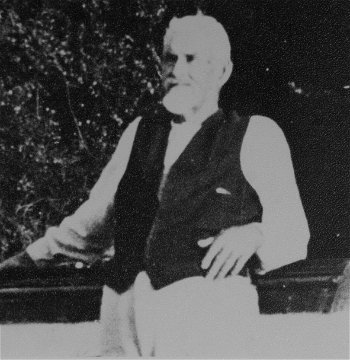
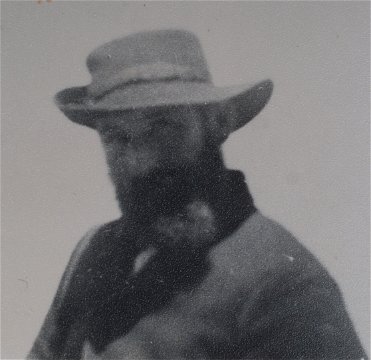

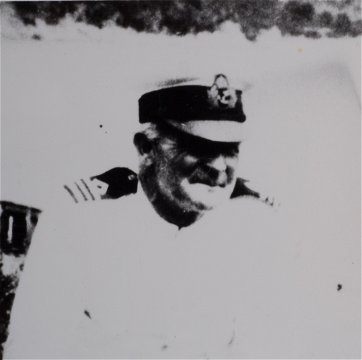


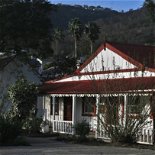


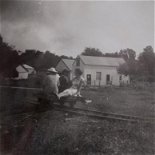


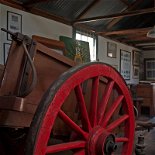
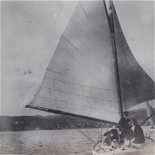


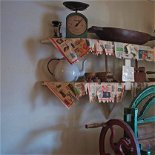
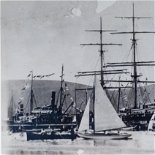

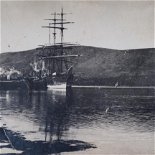


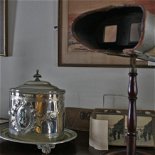
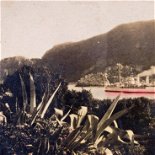
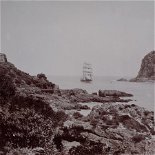
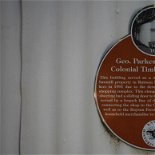
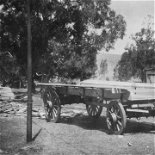
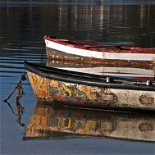

Share This Page